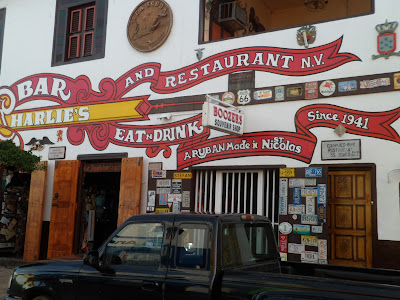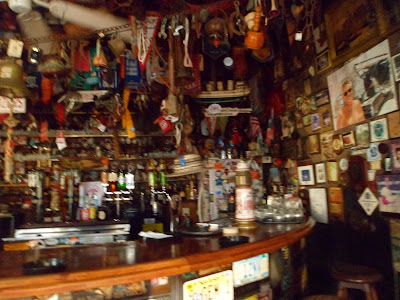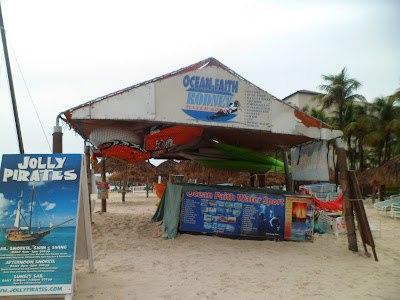Travel Guide to Japan
Introduction
Japan, the Land of the Rising Sun, is a fascinating blend of ancient traditions and cutting-edge technology. From serene temples and beautiful gardens to bustling cities and innovative cuisine, Japan offers something for every traveler. This guide will provide you with a detailed itinerary, recommendations on places to visit, tips for traveling, and advice on the best times to go.
Best Times to Visit Japan
Japan is a country with distinct seasons, each offering its unique charm:
1. **Spring (March to May):** Spring is one of the most popular times to visit Japan, mainly because of the cherry blossom season. The sakura (cherry blossoms) typically bloom in late March to early April, creating a picturesque landscape. Cities like Tokyo, Kyoto, and Osaka are especially beautiful during this time.
2. **Summer (June to August):** Summer in Japan is hot and humid, but it's also festival season. You can experience traditional Japanese festivals (matsuri), fireworks displays, and the famous Gion Matsuri in Kyoto. It's also a great time to visit Hokkaido, which remains cooler than the rest of the country.
3. **Autumn (September to November):** Autumn is another great time to visit Japan, thanks to the stunning fall foliage. The leaves change color from late October to early December, offering breathtaking views, especially in places like Nikko, Kyoto, and the Japanese Alps.
4. **Winter (December to February):** Winter is the perfect time to visit if you enjoy winter sports. Hokkaido and the Japanese Alps offer excellent skiing and snowboarding opportunities. You can also experience unique winter festivals, such as the Sapporo Snow Festival.
### Suggested Itineraries
#### 1. Classic Japan (10 Days)
**Day 1-3: Tokyo**
- **Day 1:** Arrive in Tokyo. Explore Asakusa and visit Senso-ji Temple. Stroll through Ueno Park and visit the museums.
- **Day 2:** Visit the Meiji Shrine and explore Harajuku. Walk down Omotesando and shop in Shibuya.
- **Day 3:** Take a day trip to Nikko or Kamakura.
**Day 4-6: Kyoto**
- **Day 4:** Take the Shinkansen (bullet train) to Kyoto. Visit Fushimi Inari Shrine.
- **Day 5:** Explore the Arashiyama Bamboo Grove, Tenryu-ji Temple, and the Golden Pavilion (Kinkaku-ji).
- **Day 6:** Visit Kiyomizu-dera Temple, Gion District, and participate in a traditional tea ceremony.
**Day 7-8: Osaka**
- **Day 7:** Travel to Osaka. Visit Osaka Castle and explore the Dotonbori area for its vibrant nightlife and street food.
- **Day 8:** Take a day trip to Nara. Visit Todai-ji Temple and the Nara Deer Park.
**Day 9-10: Hiroshima and Miyajima**
- **Day 9:** Travel to Hiroshima. Visit the Peace Memorial Park and Museum.
- **Day 10:** Take a ferry to Miyajima Island. Visit Itsukushima Shrine and hike up Mount Misen. Return to Tokyo or Osaka for departure.
#### 2. Northern Japan (10 Days)
**Day 1-3: Sapporo**
- **Day 1:** Arrive in Sapporo. Explore Odori Park and the Sapporo TV Tower.
- **Day 2:** Visit the Sapporo Beer Museum and the historic village of Hokkaido.
- **Day 3:** Take a day trip to Otaru, famous for its canal and seafood.
**Day 4-5: Hakodate**
- **Day 4:** Travel to Hakodate. Visit the Goryokaku Tower and park.
- **Day 5:** Explore the Hakodate Morning Market and take the cable car to Mount Hakodate for a stunning night view.
**Day 6-7: Aomori**
- **Day 6:** Travel to Aomori. Visit the Nebuta Warasse and the Aomori Museum of Art.
- **Day 7:** Take a day trip to Hirosaki. Visit Hirosaki Castle and the surrounding gardens.
**Day 8-10: Akita and Kakunodate**
- **Day 8:** Travel to Akita. Visit the Akita Museum of Art and Senshu Park.
- **Day 9:** Take a day trip to Kakunodate, known for its well-preserved samurai district.
- **Day 10:** Return to Sapporo for departure.
#### 3. Southern Japan (10 Days)
**Day 1-3: Fukuoka**
- **Day 1:** Arrive in Fukuoka. Visit Ohori Park and Fukuoka Castle.
- **Day 2:** Explore the Canal City shopping complex and visit the Fukuoka Asian Art Museum.
- **Day 3:** Take a day trip to Dazaifu. Visit the Dazaifu Tenmangu Shrine and the Kyushu National Museum.
**Day 4-5: Nagasaki**
- **Day 4:** Travel to Nagasaki. Visit the Nagasaki Peace Park and the Atomic Bomb Museum.
- **Day 5:** Explore Glover Garden and Dejima, the Dutch trading post.
**Day 6-7: Kumamoto**
- **Day 6:** Travel to Kumamoto. Visit Kumamoto Castle and Suizenji Jojuen Garden.
- **Day 7:** Take a day trip to Mount Aso, one of the world's largest active volcanoes.
**Day 8-10: Kagoshima and Yakushima**
- **Day 8:** Travel to Kagoshima. Visit the Sengan-en Garden and the Shiroyama Observatory.
- **Day 9:** Take a ferry to Yakushima Island. Explore the ancient forests and see the famous Jomon Sugi tree.
- **Day 10:** Return to Fukuoka for departure.
### Top Recommendations
#### Must-Visit Cities
1. **Tokyo:** The capital city is a bustling metropolis that offers a mix of modern and traditional attractions. Don't miss the historic Asakusa district, the trendy Shibuya and Harajuku neighborhoods, and the tranquil Meiji Shrine.
2. **Kyoto:** Known for its well-preserved temples, traditional wooden houses, and beautiful gardens, Kyoto is a must-visit for history and culture enthusiasts. Key sights include the Golden Pavilion, Fushimi Inari Shrine, and the Arashiyama Bamboo Grove.
3. **Osaka:** Famous for its food, Osaka is a lively city with a distinct personality. Explore the Dotonbori district for street food, visit Osaka Castle, and take a trip to Universal Studios Japan.
4. **Hiroshima:** A city with a poignant history, Hiroshima is home to the Peace Memorial Park and Museum, which commemorates the atomic bombing of the city during World War II. Nearby Miyajima Island is also worth a visit.
5. **Nara:** Just a short train ride from Kyoto or Osaka, Nara is known for its friendly deer and impressive Todai-ji Temple, which houses one of Japan's largest bronze Buddha statues.
#### Unique Experiences
1. **Stay in a Ryokan:** Traditional Japanese inns, known as ryokan, offer a unique cultural experience. Enjoy tatami-matted rooms, futon beds, kaiseki (multi-course) dinners, and relaxing in hot spring baths (onsen).
2. **Onsen Bathing:** Japan is famous for its natural hot springs. Popular onsen destinations include Hakone, Beppu, and Kusatsu. Bathing in an onsen is a relaxing and rejuvenating experience.
3. **Tea Ceremony:** Participate in a traditional Japanese tea ceremony to experience the art of tea preparation and enjoy matcha (green tea) in a serene setting.
4. **Sumo Wrestling:** If you're visiting during a sumo tournament, try to catch a match. The tournaments are held in Tokyo, Osaka, Nagoya, and Fukuoka at different times of the year.
5. **Cherry Blossom Viewing:** Hanami, or cherry blossom viewing, is a beloved Japanese tradition. Visit parks like Ueno Park in Tokyo, Maruyama Park in Kyoto, and Himeji Castle for some of the best cherry blossom views.
### Travel Tips
1. **Transportation:** Japan has an extensive and efficient public transportation system. The Japan Rail Pass is a cost-effective option for long-distance travel. It allows unlimited travel on JR trains for a fixed period.
2. **Language:** While many Japanese people can speak some English, it's helpful to learn a few basic phrases in Japanese. Carrying a translation app can also be useful.
3. **Etiquette:** Japanese culture places a high value on manners and respect. Some key points include:
- Bowing when greeting or thanking someone.
- Removing your shoes when entering someone's home or certain traditional accommodations.
- Speaking quietly and avoiding loud conversations in public places.
4. **Cash:** While credit cards are becoming more widely accepted, Japan is still a largely cash-based society. ATMs that accept foreign cards can be found at post offices, convenience stores, and major train stations.
5. **Wi-Fi:** Free Wi-Fi is available at many public places, but it's a good idea to rent a portable Wi-Fi device or SIM card for your trip. This will ensure you have internet access wherever you go.
### Culinary Delights
Japan is a food lover's paradise. Here are some must-try dishes and dining experiences:
1. **Sushi:** Sushi is a must-try in Japan. For an authentic experience
, visit a sushi counter where you can watch the chef prepare each piece.
2. **Ramen:** Each region of Japan has its own unique style of ramen. Try miso ramen in Sapporo, tonkotsu ramen in Fukuoka, and shoyu ramen in Tokyo.
3. **Tempura:** Lightly battered and deep-fried seafood and vegetables, tempura is a delicious and delicate dish. Visit a specialized tempura restaurant for the best experience.
4. **Kaiseki:** Kaiseki is a traditional multi-course meal that showcases seasonal ingredients and meticulous preparation. It's a culinary journey that should not be missed.
5. **Okonomiyaki:** Often described as a Japanese savory pancake, okonomiyaki is a popular dish in Osaka and Hiroshima. You can even cook it yourself at some restaurants.
6. **Street Food:** Japan's street food is varied and delicious. Try takoyaki (octopus balls), taiyaki (fish-shaped pastries filled with sweet bean paste), and yakitori (grilled chicken skewers).
### Shopping
Japan is a shopper's paradise, offering everything from high-end fashion to unique souvenirs:
1. **Electronics:** Akihabara in Tokyo is the go-to place for electronics and gadgets. From the latest cameras to quirky gadgets, you'll find it all here.
2. **Fashion:** Shibuya and Harajuku in Tokyo are famous for trendy fashion stores. For luxury brands, head to Ginza.
3. **Traditional Crafts:** Kyoto is known for its traditional crafts, including pottery, textiles, and tea sets. Visit the Nishijin Textile Center for beautiful kimono fabrics.
4. **Anime and Manga:** Fans of anime and manga should visit Akihabara and Ikebukuro in Tokyo, where you'll find a wide range of merchandise, from figurines to rare manga volumes.
5. **Food:** Bring home some edible souvenirs like matcha (green tea) sweets, Japanese snacks, and regional specialties. Depachika (department store food halls) are a great place to find these.
### Safety and Health
Japan is one of the safest countries in the world, but it's always good to be prepared:
1. **Emergency Numbers:** The emergency number for police is 110, and for fire and ambulance services, it's 119.
2. **Medical Services:** Japan has excellent medical facilities. If you need medical attention, ask your hotel to help you find the nearest hospital or clinic.
3. **Travel Insurance:** Make sure you have travel insurance that covers medical expenses, trip cancellations, and lost belongings.
4. **Natural Disasters:** Japan is prone to earthquakes and typhoons. Familiarize yourself with safety procedures and stay informed about weather conditions.
### Conclusion
Japan is a country that offers a rich and varied travel experience. Whether you're exploring the bustling streets of Tokyo, enjoying the tranquility of a Kyoto temple, indulging in delicious cuisine, or relaxing in an onsen, Japan has something for everyone. By planning your itinerary and understanding the best times to visit, you can ensure a memorable and fulfilling trip. Enjoy your journey to the Land of the Rising Sun!
---












